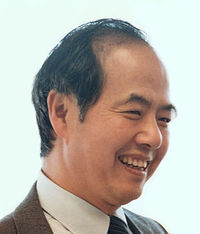Tsung-Dao Lee
Scientist
Tsung-Dao Lee (T. D. Lee, Chinese: 李政道; pinyin: Lǐ Zhèngdào) (born November 24, 1926) is a Chinese-born American physicist, well known for his work on parity violation, the Lee Model, particle physics, relativistic heavy ion (RHIC) physics, nontopological solitons and soliton stars. He holds the rank of University Professor Emeritus at Columbia University, where he has taught since 1953 and from which he retired in 2012.In 1957, Lee, at the age of 30, won the Nobel Prize in Physics with C. N. Yang for their work on the violation of parity law in weak interaction, which Chien-Shiung Wu experimentally verified.Lee was the youngest Nobel laureate after World War II until Malala Yousafzai was awarded the Nobel Peace Prize in 2014. He is the fourth youngest Nobel laureate in history after W. L. Bragg (who won the prize at 25 with his father W. H. Bragg in 1915), Werner Heisenberg (who won in 1932 also at 30) and Malala Yousafzai. Lee and Yang were the first Chinese laureates. Since he became a naturalized American citizen in 1962, Lee is also the youngest American ever to have won a Nobel Prize.
Personal facts
| Alias (AKA) | 李政道 (Chinese); Lee T.-D. |
|---|
| Birth date | November 24, 1926 |
|---|
| Birth place | China , Shanghai , Republic of China (1912–49) |
|---|
| Citizenship | |
|---|
| Education | National Southwestern Associated University |
|---|
| Known for | Relativistic heavy-ion physics |
|---|
